Label-free and package-free returns. Most people associate this return option with Amazon, though FedEx and UPS also offer it for other select retailers.
Amazon pioneered this return option and has swum in this pond for years. But they don’t have a monopoly on it. Retailers should seriously consider offering this increasingly in-demand method of returning e-commerce purchases.
There are certainly drawbacks to consider and plenty of benefits and opportunities to take advantage of.
We'll look at these and the specifics of offering label-free and package-free returns. We’ll also explore how Delivery Solutions’ omnichannel experience platform helps retailers execute this returns option.
Why offer label-free and package-free returns?
Label-free and package-free returns benefit both retailers and customers in various ways.
Retailer benefits
Cuts processing time
The return of items as-is without packaging supplies cuts down on processing time. Package-free returns can also be consolidated and sent to the returns warehouse, saving money and streamlining processing.
Software such as the platform provided by Delivery Solutions helps further streamline the process of shipping these consolidated returns. It provides enhanced visibility and reverse logistics management options to ensure the smooth and efficient processing of returned items.
Saves money
Customer returns are costly to retailers, amounting to over $743 billion in 2023. Over $247 billion resulted from returns on online shopping purchases, an increase from 2022’s nearly $213 billion.
Overall, the cost of returns on online purchases has been increasing, with an excess of $2 billion being the norm for the past few years. As such, retailers are always looking for ways to mitigate these costs. No-box returns are one of those ways.
Decreases waste
Returns without packaging also decrease waste, which matters to an increasing number of consumers. 44% of Gen Z consumers and 42% of Millennials are more likely to purchase from brands with sustainable shipping and returns options than other brands.
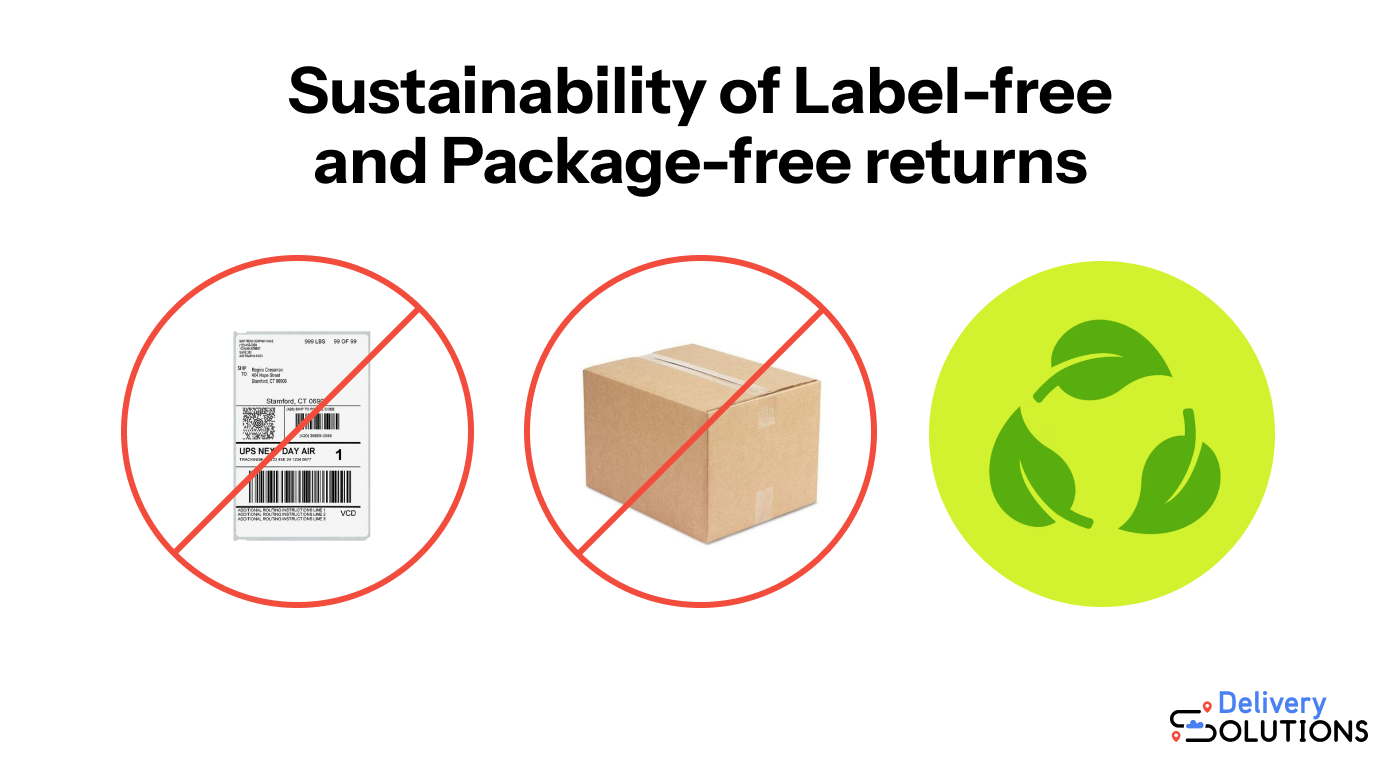
Increases customer touchpoints
Label-free and box-free returns also increase customer touchpoints since customers have various options for dropping off their returns. Sixty-two percent of consumers use their refund to shop at the returns drop-off site, the original merchant, or a third-party location.
This helps provide an incentive for brands to consider forming location partnerships. For brands with subsidiaries, profits from these touch points contribute to the company's overall profits.
Best of all, the returns platform, if powered by software like Delivery Solutions, will learn customer behavior and preferences. This info can then be used to create personalized marketing experiences around these touchpoints in the future.
Satisfies customers
Satisfied customers return and refer, and easy, hassle-free returns satisfy customers. Sixty-seven percent of shoppers favor package-free and label-free returns over any other return method. 91% are more likely to shop at a retailer offering this option and issuing immediate refunds.
However, 62% will hesitate to purchase again from a brand after a negative return experience. Half have abandoned a purchase in the past due to a lack of convenient returns options.
A dependable platform helps you seamlessly offer and institute various returns options, including label-free and package-free returns. Returns options give customers the freedom, flexibility, and convenience that they expect nowadays with brand interactions.
Including favored returns methods can positively affect your customer retention rate and revenue.
Customer benefits
Greater convenience
Fifty percent of consumers ditch a purchase due to a lack of convenient return options.
Repackaging is the #1 challenge for consumers with making returns, and many don’t own or have casual access to a printer to print a shipping label. Label-free and package-free returns eliminate these challenges and simplify the process.
Cost savings
Label-free and package-free returns save customers from paying return shipping fees. According to 87% of consumers and 99% of retailers, free returns are most important to shoppers.
Retailers levy return fees for some return options to help offset the added expenses and lost revenue incurred by returns. They can offer label-free and package-free returns as a free or cheaper option because it's more cost-effective and time-effective than most other methods.
Environmentally-friendly
Label-free and package-free returns are more sustainable for the brand and the customer. It would be among the preferred return methods for environmentally-conscious customers.
Quicker refund
Refund timelines are the third greatest challenge for consumers with online returns. Forty-six percent of refund timelines are six days or more, while 40% are undisclosed.
Yet, shoppers want fast, if not immediate, refunds. Forty-eight percent expect their refund to be within 24 hours, 84% expect it to be within 72 hours, and 86% consider a refund timeline of over a week unacceptable.
Label-free and package-free returns allow quicker verification and processing, meaning quicker refund initiation. Customers tracking their returns status through your Delivery Solutions powered site or app can see when their return has been completed and their refund promptly issued.
Considerations of offering label-free and package-free returns
You should also consider a few drawbacks to offering label-free and package-free returns.
Feedback
It’s more challenging to verify the reason for a return and the eligibility of merchandise returns with third-party drop-off. Returns to the original retail store allow the customer service desk team to salvage the sale by rectifying some issues.
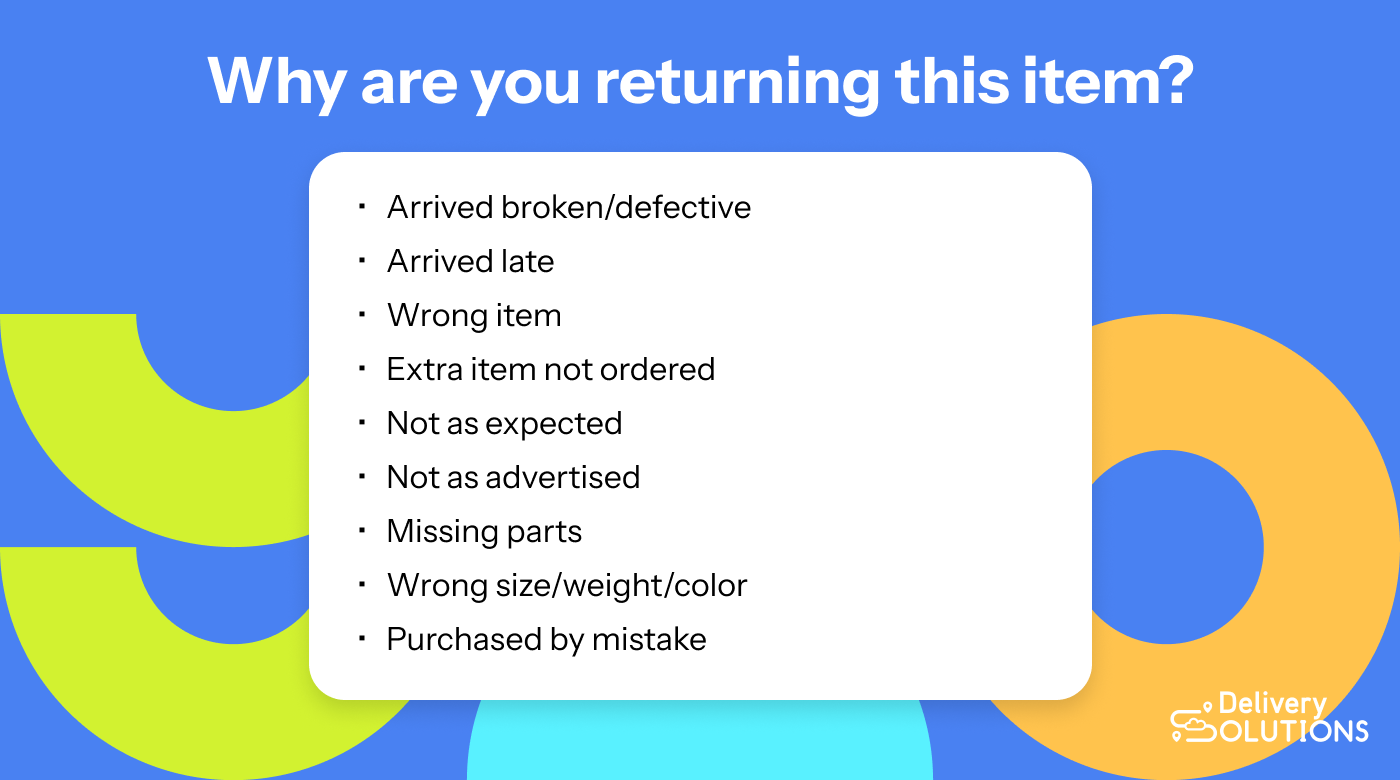
They can offer an exchange for the same item or help find a comparable one of similar value in stock. They can also clear up any misunderstandings that may have instigated the return. Once cleared up, the customer may cancel the return and leave with the original purchase.
Friendly employees delivering top-notch customer service can, at the very least, flip an otherwise frustrating experience into a positive one if they know what the issue is. If they can't salvage the sale, they can still salvage the customer's patronage and impression of the brand.
Revenue
Third-party drop-off costs your brand the chance to salvage your brand image and the sale with excellent customer service. It also costs you the chance to profit from the returns experience by cross-selling or upselling to the customer while they’re in your store.
Especially if they accept the offer of a gift card or in-store credit rather than a monetary refund, they’re more likely to shop while in-store. As previously stated, most consumers shop at the location where they’re dropping off returns.
However, customers opting for label-free and package-free returns at an access point like FedEx will not immediately shop again.
Fraud
Over 13% of the cost of returns in 2023 resulted from fraud.
And 99% of retailers consider returns fraud a significant issue. Easier returns, such as label-free and package-free returns, can translate to increased fraud, especially with only 51% of retailers incorporating fraud protection into their return process.
In-store returns are easier to verify because the store staff can physically evaluate the items and speak with the customer on the spot. However, access point staff aren’t connected to the original merchant and, therefore, can’t verify the return similarly.
Label-free and package-free return logistics
There are various logistical steps to offering label-free and package-free returns. We’ll look at those steps as well as real-life examples for each.
Initiation
One consideration for offering label-free and package-free returns is the return initiation process. Most retailers offer return initiation through online portals, although 21% also offer return email, phone, or in-store initiation.
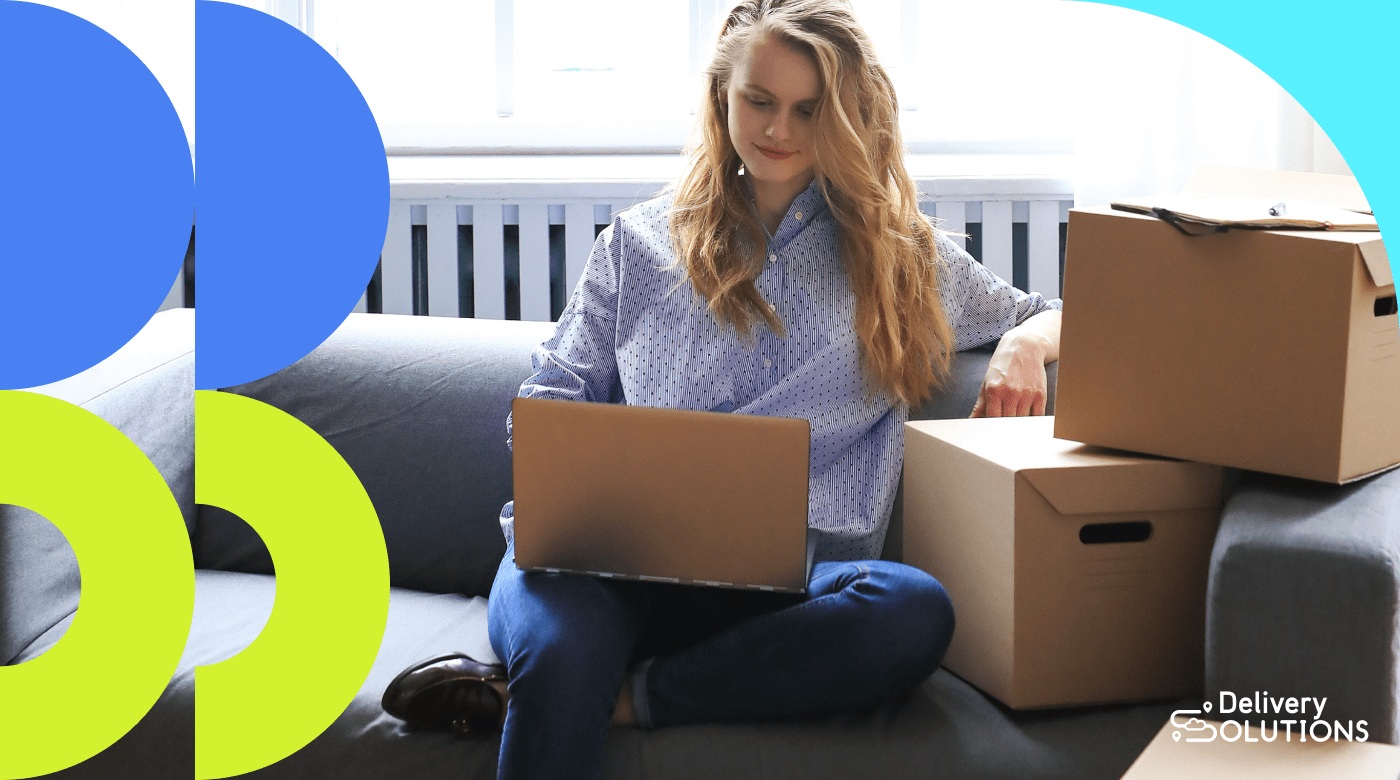
Self-service return portals can be hosted on your website and/or your store’s mobile app. Such portals, when powered by a robust solution like Delivery Solutions, can help your customers perform a host of returns-related actions:
- Report an issue with a purchase
- Request an exchange or refund
- Detail the reason for a return
- Determine return eligibility
- Select a return method
- Choose between a monetary refund or a shopping credit
- Receive return instructions
- Locate a store or drop-off location
- Pull up a returns QR code for scanning
- View tracking information and return status
- Read FAQs
- Contact customer service
Drop-off options
You can offer a few options for label-free box-free return locations, depending on what kind of business you have.
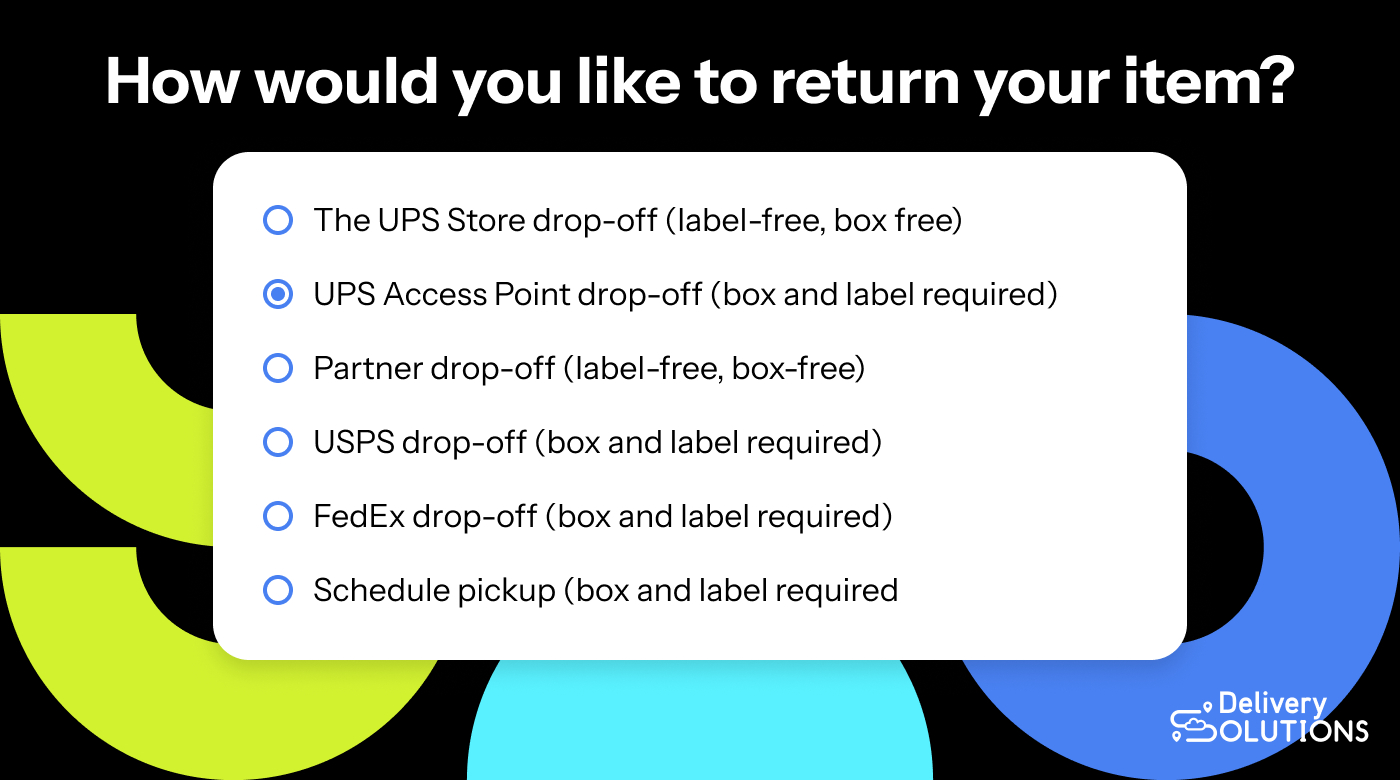
Brand store
The most obvious drop-off option for customers is your brand store or BORIS. Even though Amazon is a web-based company, it also has physical stores. Online shoppers can drop off items for return at any Amazon store location, such as Amazon Fresh or Amazon Go.
Subsidiary store
Another drop-off option is with your company's subsidiaries, if applicable. For example, shoppers can drop off label-free and package-free Amazon returns at any Whole Foods location.
Partner store
You can also form a partnership with a completely separate brand to accept returns to your store. This option is particularly beneficial to online retailers with no physical store.
Amazon has partnerships with Kohl’s and Staples, which accept label-free and package-free Amazon returns.
FedEx Office or UPS Store
A fourth option is through a partnership with FedEx or UPS.
For years, the UPS Store has offered this returns option for participating retailers, most notably Amazon. Over 5,000 locations make it a convenient drop-off point for consumers.
Last year, FedEx started offering label-free and package-free returns for participating retailers at over 2,000 locations.
Verification
The next step to consider with label-free and package-free returns is your method of verifying the return. This typically involves scanning a QR code or barcode delivered to the customer via email or through the returns portal in your store app.
The scanned QR code often pulls up a prepaid return label to print and affix to the packaged return. The staff at the store or drop-off site uses the code to print the return label for the customer and then packages the item if not already done.
But increasingly, brands can scan the QR code to verify the return without needing a separate shipping label. Since the drop-off point will ship out multiple returns together, they don’t all need separate labels or packaging.
Scanning a code to verify the return is also how brands guard against some returns fraud.
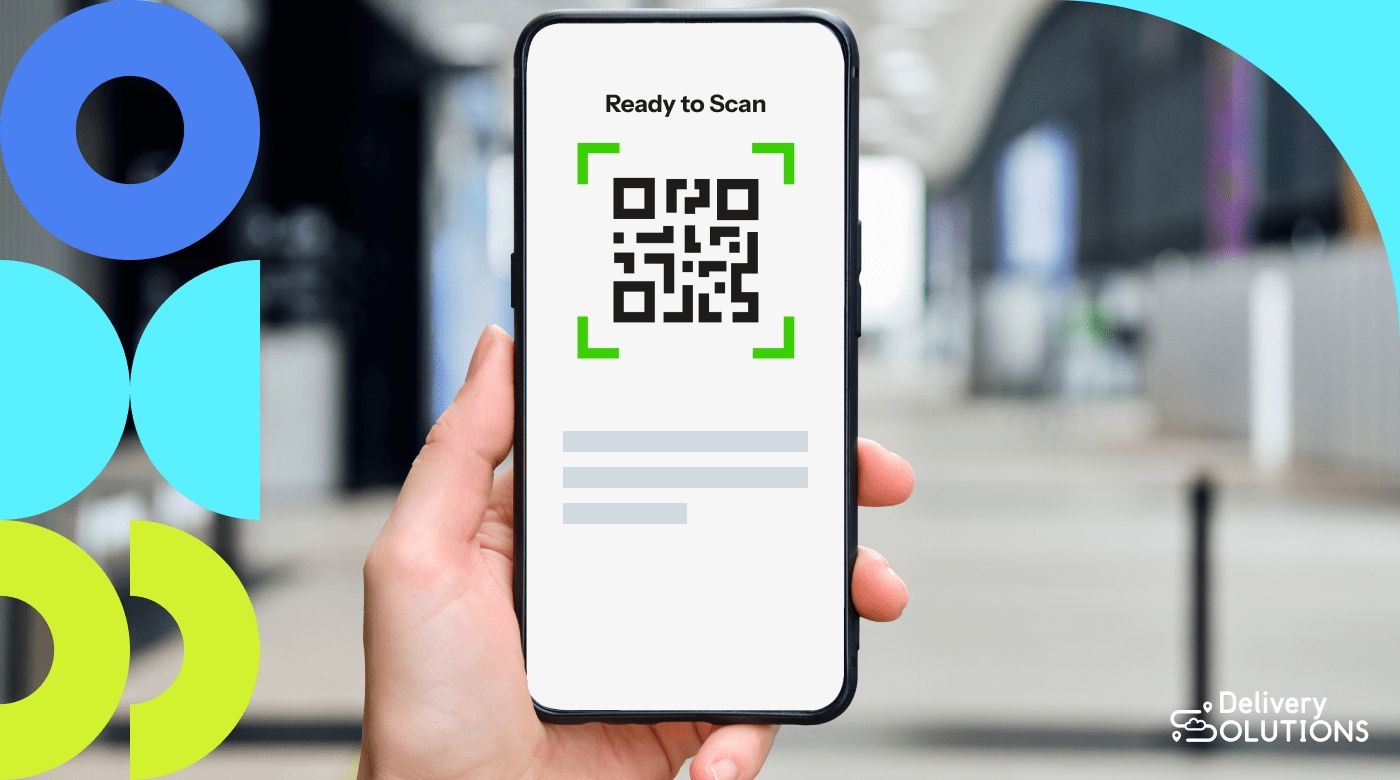
Pricing
Next comes the decision to incorporate a fee into your return policy. This could be a restocking, processing, convenience, or shipping fee. Some brands even charge more than one.
As stated earlier, retailers typically levy these fees to offset the lost revenue from the return. Fees also help prevent fraud, as 41% of admitted fraudsters identified return fees as an effective deterrent.
However, return fees can also result in company losses.
Twenty-four percent of consumers will pay for a label-free and box-free return option. However, 85% will choose a free method over any paid one, even if that would be their least preferred return method otherwise.
And 40% would likely quit a brand altogether if it stopped offering free returns options.
Still, 81% of retailers implemented a fee for at least one of their returns methods in 2023. This resulted in a few benefits, including:
- Most consumers select the free returns option, which, for many brands, is the most cost-effective option for the business
- Most consumers opt for exchanges rather than refunds
- A 53% decrease in returns
- A 49% recovery of revenue from fees
However, it also resulted in significant drawbacks, including:
- Decreased sales by 40% and average order value by nearly 50%
- Increased customer complaints by nearly 50%
- 30% loss of customers
- Having to choose between order fulfillment and returns processing
Reverse logistics
The last step to consider is shipping returns to the original store or a warehouse for processing and returns management.
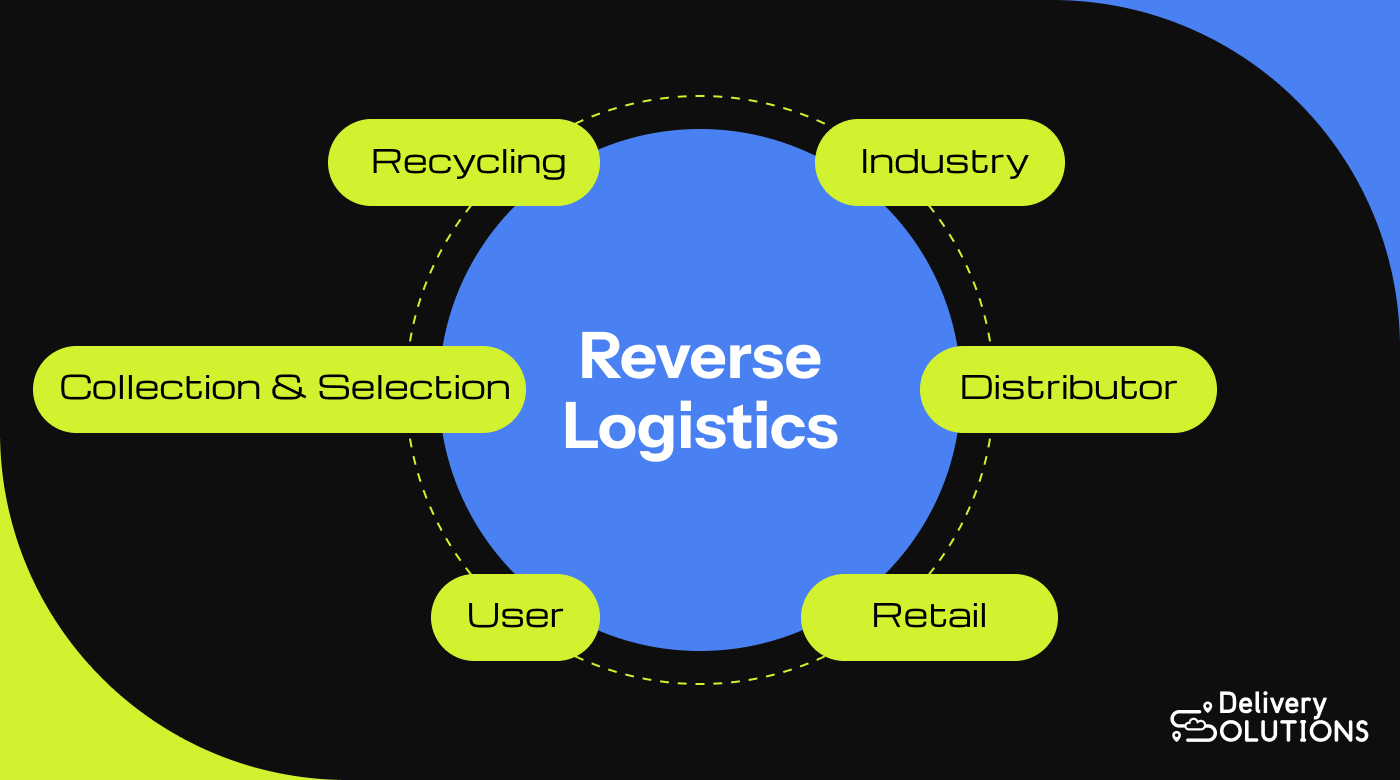
From there, depending on the reason for the returns and the condition of each item, the merchandise is processed and sorted for:
- Direct resale
- Repair and resale
- Refurbishing and resale
- Reuse
- Recycling
- Donation
- Disposal
Label-free and package-free returns make the reverse logistics process cheaper, more time-efficient, and more streamlined. This is especially true when your return policy implements the right processes and incorporates the right technology.
How Delivery Solutions helps facilitate label-free and package-free returns
Delivery Solutions’ platform helps enterprise brands orchestrate the label-free and package-free returns process.
Multi-method return support
Delivery Solutions supports home pickup, return shipping, and in-store or access-point drop-off.
Multi-SKU returns
Customers can simultaneously make multiple returns and exchanges and keep track of them from a single platform. Gather return details, issue instructions, offer return options, collect fees, and show tracking and status info.
Branding
Apply your company’s brand features (logo, colors, fonts, voice, etc.) to every step of the customer journey. Customize returns portal pages, tracking pages, notifications, emails, and texts to maintain consistency.
Access point locator
Customers can locate the nearest available drop-off locations that you offer for returns.
Transparent fulfillment
Improve customer visibility for returns as well as purchase fulfillment. Keep them aware of their return and refund status by providing real-time tracking information and status updates.
Actionable notifications
Actionable notifications streamline and integrate the tracking process and prevent a disjointed experience.
Analytics
Analytics insights can inform every step of your process for instituting a new box-free, label-free return option. Use analytics to monitor trends and to improve and perfect your returns processes.
Add label-free and package-free returns to your service offerings today
After reading this, do you think label-free and package-free returns could benefit your company? Can you see a way forward for implementing this return option?
Are you convinced that Delivery Solutions offers everything you need to blend it into your current protocols?
If you need a little extra convincing, book a live demo today. See how Delivery Solutions integrates seamlessly with current systems while connecting with industry-leading partners to help you offer extra value to your customers.
Russ Bair
Russ Bair is the Chief Product Officer at Delivery Solutions, the leading provider of last-mile delivery and fulfillment software. He helps ensure retailers achieve their goals and they are able to provide meaningful experiences for their customers. Prior to his tenure at Delivery Solutions, Russ was President of projekt202—an experience-driven consulting firm founded to apply deep ethnographic research to the development of mobile, web, and workplace software. He received his Bachelors in Computer Science from Texas A&M and has more than 25 years of extensive experience in the software development and consulting fields. While holding leadership roles within organizations or various sizes, Russ has designed, developed, and led the creation of complex custom software implementations for small, medium, and Fortune 500 companies across the United States. Russ is fulfilled by helping those around him reach their potential through servant leadership and collaborating to create progress and economic value. He currently lives in the Dallas area with his wife Jana and two children.
Topics from this blog: Delivery Retail Management
.png)
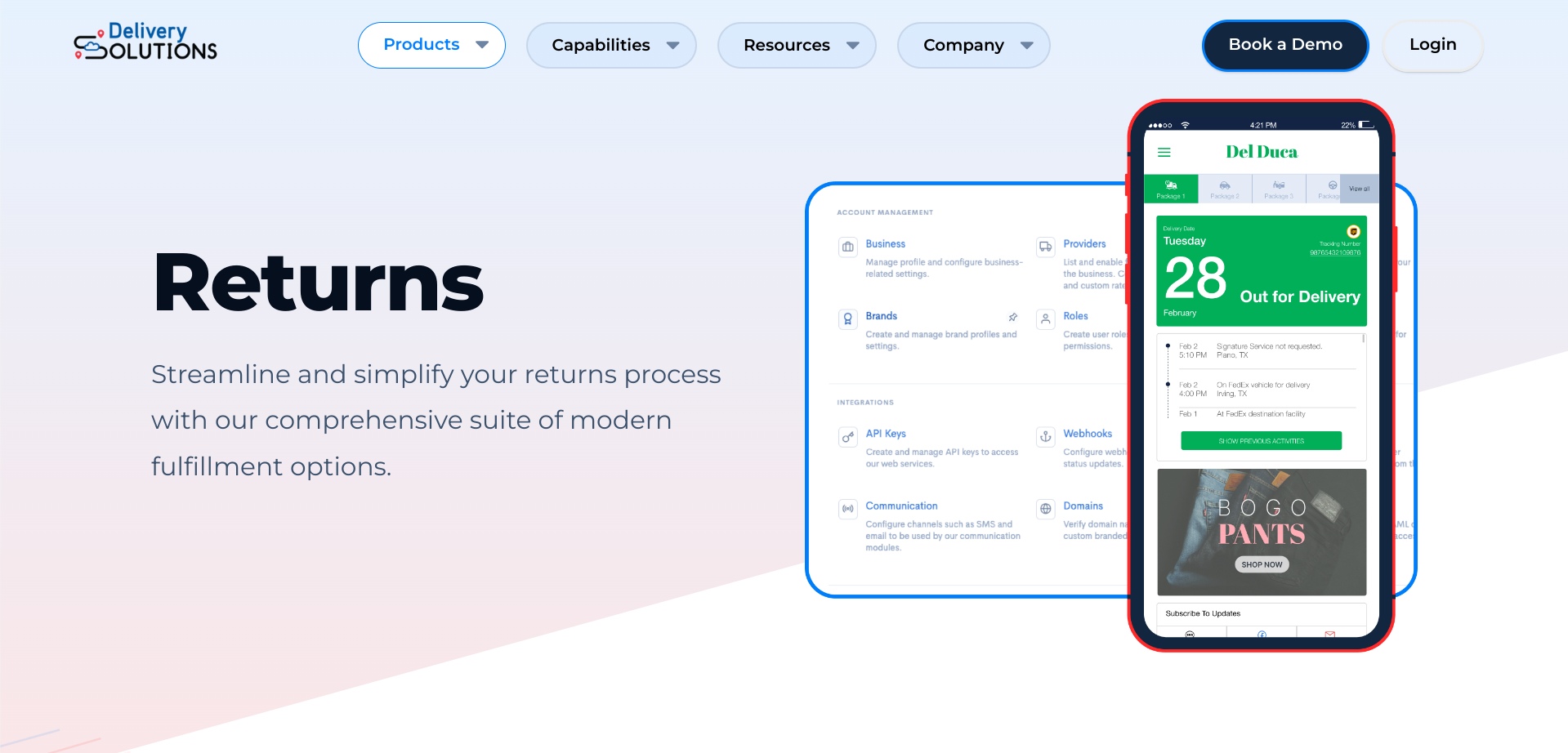 (
(